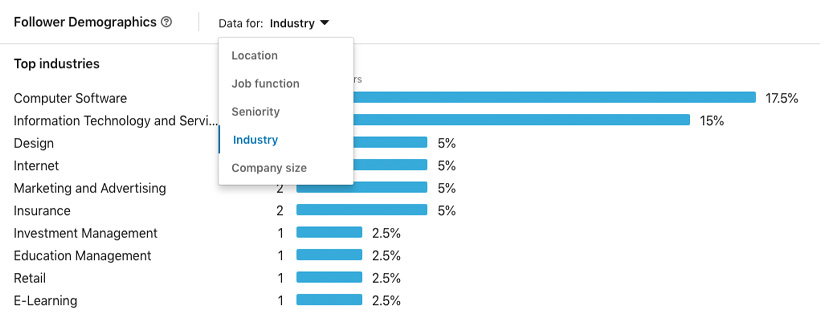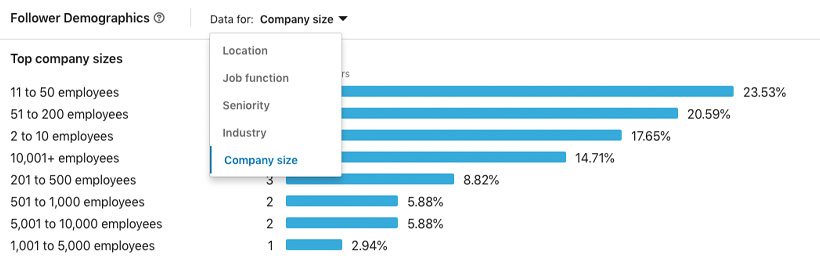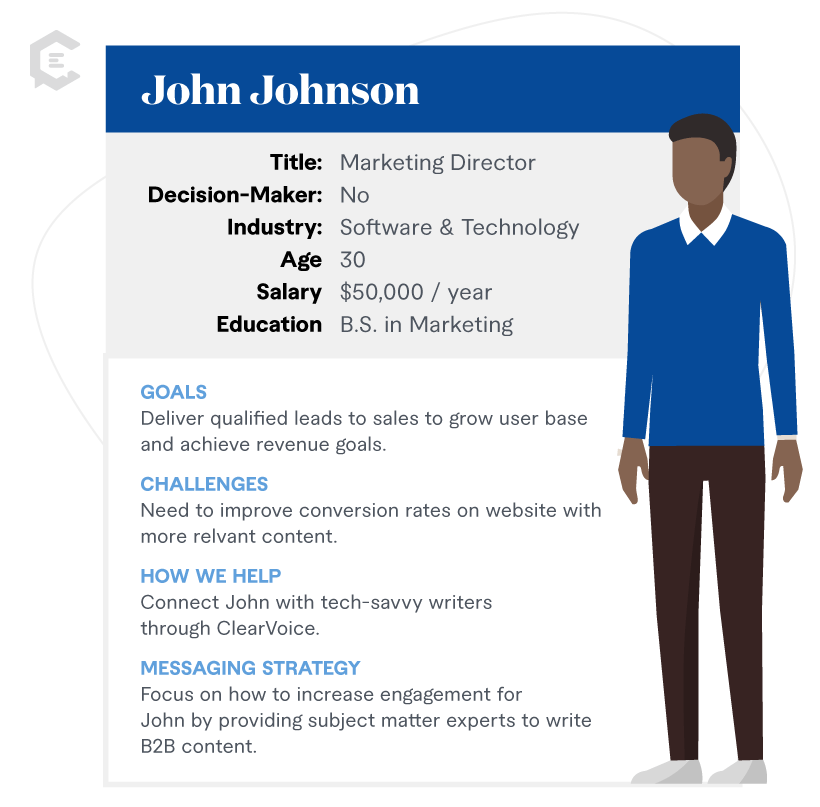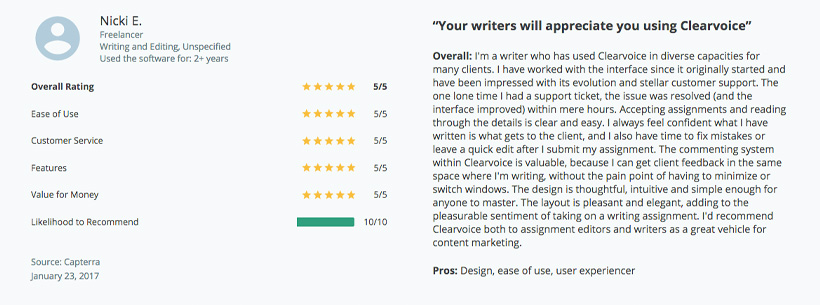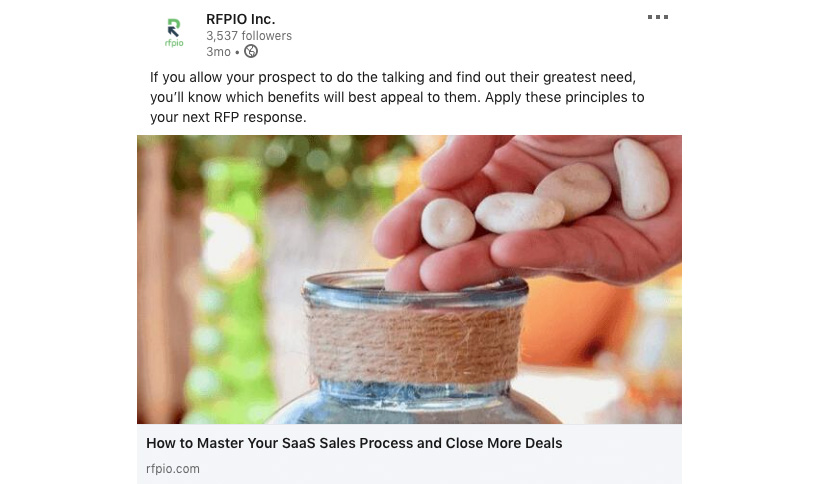What is vertical content? Vertical content is content that appeals to a business niche. Verticals are major categories or themes near the top of a brand hierarchy. Vertical content involves the creation of highly relevant messaging for your intended audience. Rather than casting a wide net, vertical content addresses specific goals and needs within a niche market.
Everybody is creating content.
There are more than 600 million blogs out there. And on social, you’re not just competing with influencers, you’re also competing with “petfluencers.” That’s right – like JiffPom, the weird miniature teddy bear dog with 9.2 million Instagram followers.
Long story short, people are endlessly distracted and attention is divided. Having a content strategy isn’t enough anymore. You need to discover a deeper content connection, which is where the content marketing hierarchy lends support.
A content hierarchy is a method and structure for organizing your brand and marketing content.
It looks like this…
In case you missed the overview of content level No. 1 core content… pause, read that article, then proceed with this one. Today we’re covering vertical content to help you fully develop your content niche and then execute accordingly.
What is Vertical Content?
Vertical content is a piece of content that appeals to a business niche. Verticals are major categories or themes near the top of a brand hierarchy. Vertical content involves the creation of highly relevant messaging for your intended audience. Rather than casting a wide net, vertical content addresses specific goals and needs within a niche market.
Vertical content is the second content level in the top tier of a content hierarchy, just behind core content. Both core content and vertical content are closely aligned with business goals. Verticals can be industries, company sizes, or demographics.
Some marketers refer to verticals as “channels,” usually in the context of major media organizations — think television and radio, not distribution channels like social and search. To sync up content creators and strategists, be crystal clear about the definition of content verticals for your brand.
Horizontal vs. Vertical Content
The easiest way to grasp the definition of vertical content is to understand what vertical content is not… horizontal content.
Simply think about the shapes of buildings, horizontal versus vertical — horizontal is wide, and vertical is narrow. With horizontal content, you create content that has mass appeal (wide range, larger audience). With vertical content, you create content for a select few (narrow focus, smaller audience).
Here are several solid points from Corporate Finance Institute about operating in horizontal markets:
- A business that operates in a horizontal market has a broad and diverse set of customers.
- Their products are versatile, so they can serve a large consumer base across multiple industries that have a wide range of needs.
- Traditional methods such as billboards and television ads are sometimes a much more effective strategy for selling their products.
- The main disadvantage of operating in a horizontal market is having a marketing strategy that is not targeted, which can result in lower profit margins as compared to a vertical market.
Your brand likely doesn’t serve one particular vertical. Because you work across multiple verticals, you need to differentiate messaging for each one. Vertical content allows you to talk one way to a healthcare entity and use a different approach with a financial services organization.
Why Vertical Content Matters
At this point, you might be thinking that using this horizontal and vertical content terminology is old school. Even if these terms aren’t this month’s content marketing buzzwords, they still make sense for today’s content marketers.
When you work within the wonderful confines of content verticals, you challenge yourself to refine messaging rather than blast it into some random person’s face like an annoying TV commercial.
You have immense potential to target your messaging and reach the select few who are more likely to purchase your product or service (which results in higher content marketing ROI). Thanks to the continued advancement and accessibility of technology and data, you can identify customer habits, behaviors, and demographics, and then create focused content from these insights.
3 Ways to Apply Content Strategies to Vertical Content
Vertical content translates to personalized content, which gives you a competitive edge as your competitors succumb to the “spray and pray” approach. When applying content strategies to vertical content, messaging success depends on analytical research and human observation.
1. Analytics
Big surprise, we’re starting with analytics. Google Analytics will certainly give you unbeatable insights into search performance, behavior patterns, and top-performing content.
But don’t forget social media analytics as well. LinkedIn offers the following insights which are great jumping-off points for vertical content guidance.
Follower demographics for Superneat Marketing by industry:
Follower demographics for Superneat Marketing by company size:
These LinkedIn analytics examples come from our Superneat Marketing channel (side note: we’re a two-person agency, so we don’t have loads of followers).
Anyway, we work with B2B service providers and SaaS companies, usually well-funded startups and established mid-sized orgs. The data makes sense and we absolutely consider these demographics as we post LinkedIn content. Besides filtering by company size and industry, you can select location, job function, or seniority.
2. Personas
Personas technically fall into the realm of core content, which sits at the very top of the content marketing hierarchy. Often brands will diligently work out their brand messaging foundations — like mission and vision statements — but personas somehow fall off.
Content verticals and persona development go hand-in-hand. In these ClearVoice B2B buyer personas templates, you’ll see that we used industries as the content vertical.
Example of female persona for ClearVoice:
Example of male persona for ClearVoice:
Sandy Sanderson is in Marketing, while John Johnson works in the Software and Technology space. Although they are both marketing directors, their goals and challenges are very different — so the messaging strategy is different as well.
3. Customers
Persona development is an important step in creating relevant vertical content. However, without the external perspectives of your customers and prospects, there is a high probability that your team doesn’t really get what your niche audience is aiming to achieve.
There are several ways to go beyond the conference room brainstorming session and hear from the most valuable messaging gatekeepers of all…your customers. If you have a large customer base, segment your lists and send out surveys. If you have a smaller customer base, one-on-one interviews work well.
One more thing. If you have online customer reviews, testimonials, or case studies, sort through this content and extract any vertical content nuggets that stand out. You can then repurpose this customer intel into various types of content.
Branded Content Examples of Vertical Content
You’re all jazzed up about creating vertical content. Now you need inspiration on how to reach that niche audience through various content interactions.
One of our clients at Superneat Marketing is RFPIO, an RFP response software provider. Their platform helps business professionals respond to RFPs, security questionnaires, and a multitude of other complex documents. Their solution is pretty specific, but we reach their niche audience by creating fluid vertical content experiences.
In the branded content examples below, you’ll see their SaaS vertical content in action with an educational blog post, a video testimonial from one of their SaaS customers (who lives inside that blog post), and social distribution on LinkedIn.
SaaS vertical: blog content
Here’s a good example of SaaS blog content:
SaaS verticle: video testimonial:
SaaS vertical: social media post:
How to Achieve Content Vertical Success
You already know how saturated the content marketing landscape is. So skip mass appeal in favor of hyper-targeted messaging.
Using content verticals gives you the opportunity to simplify your messaging, no matter how complex your ideal market may seem. Because you’re focusing on a targeted niche, you’ll make a bigger impact with the select few who realize the potential of partnering with your brand.
And speaking of partnering, working with a content agency like ClearVoice is a great way to produce high-quality that drives success. We have expert, niche creators that fit your needs and budget.
Get started today by speaking with a content strategist.


